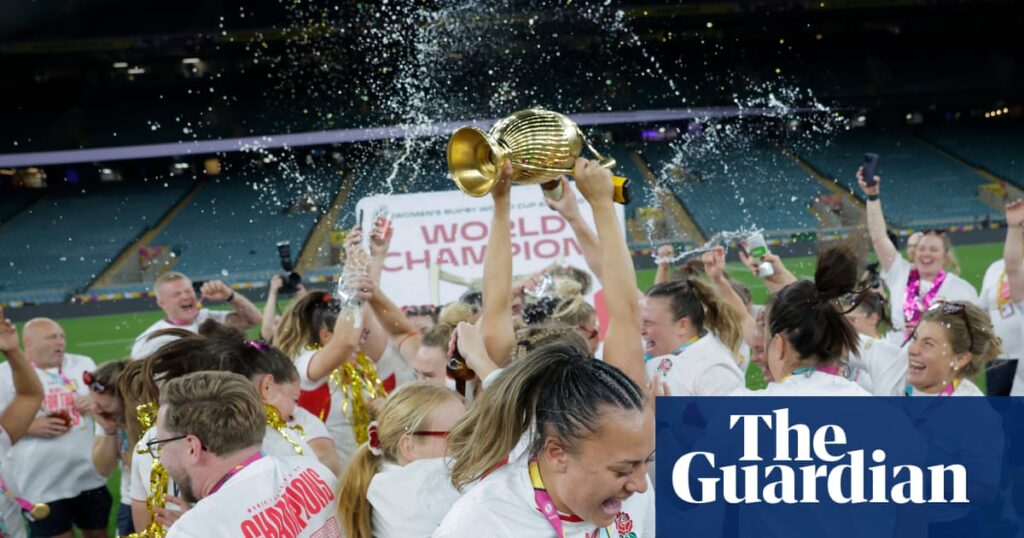The Rugby Football Union has promised to “keep its foot on the gas” after unveiling an ambitious five-year action plan to build on the momentum of the Red Roses’ Women’s Rugby World Cup victory.
The strategy, called Every Rose: Our Time, includes the goal of becoming the first England team to win back-to-back Rugby World Cups, and getting 100,000 women and girls playing the game across the country by 2030, up from the 60,000 who participate now.
English rugby’s governing body is also aiming to double its revenues from the women’s game to £60m so it can invest more in the grassroots, and to have 3 million Red Roses fans.
“The stakes have never been higher,” Alex Teasdale, the executive director of the women’s game, told an audience of government and sports officials. “The opportunity has never been greater, but sitting still is not an option because the wheels are now fully in motion.
“Together, we’ll be the nation that reaches 100,000 active players – with 70,000 of them registered and thriving in our brilliant clubs. That becomes back-to-back world champions – a historic first for England on the world stage.
“That inspires 3 million passionate Red Roses fans who are united in pride and purpose. And that generates over £60m in revenue – powering a future where meaningful profits are fuelling the growth of the community game.”
Teasdale said that women’s rugby had made huge strides from when she started at the RFU in 2011, when there were just 12,500 registered players, “and in some clubs whilst women weren’t stopped from playing, they certainly weren’t welcomed either”. But she insisted that, despite the progress since, there was still more to be done to boost the game, even during a cost of living crisis.
“Last weekend we witnessed an extraordinary milestone as 82,000 fans flooded through the gates at Allianz Stadium to see our Red Roses claim the 2025 Rugby World Cup,” she said. “And looking ahead to 2030, we want to keep this momentum going.
after newsletter promotion
“We operate in an environment where resources are limited, and that can create tough conversations. Ambitious plans, particularly for the women’s game, naturally challenge the status quo. But the reality is clear: the future of rugby depends on the women’s game.”
Meanwhile the RFU chief executive, Bill Sweeney, noted that of the 400,000 fans who attended the Women’s Rugby World Cup, 30% of them had never been to a rugby match before. “Perhaps the stat that really excites us is that 90% said they want to come back and do it all over again,” he said. “But we can’t rest on these laurels. We must keep our foot on the gas.”

